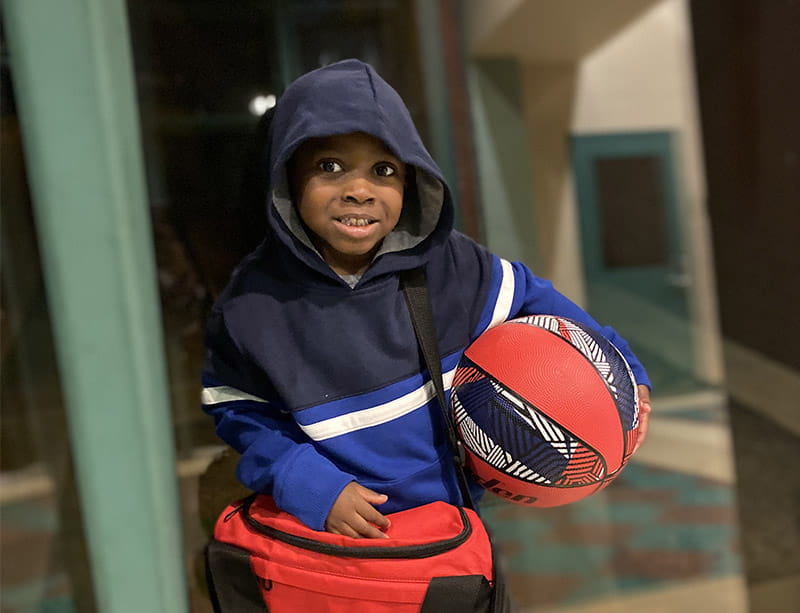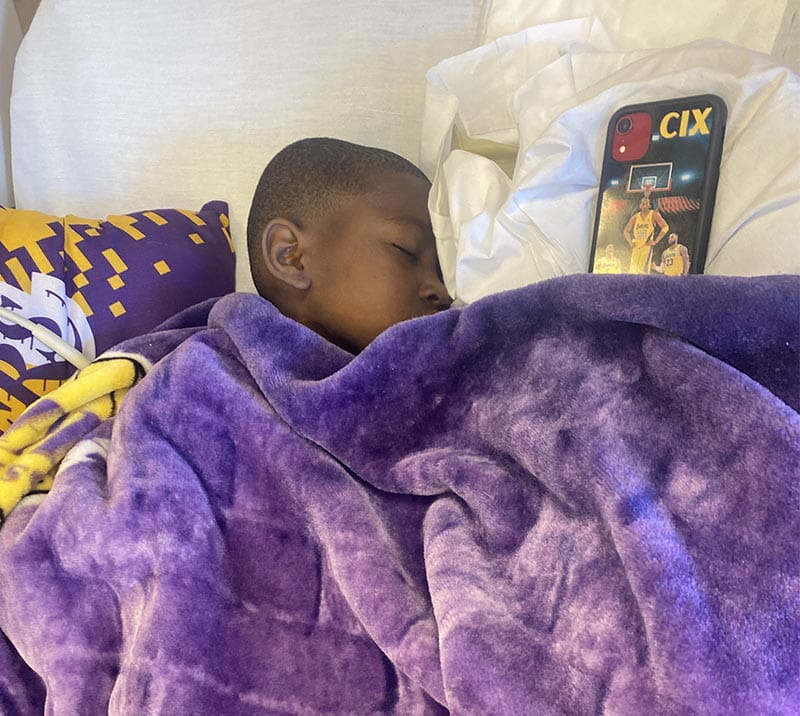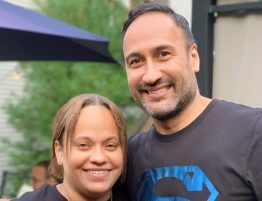
On her first visit to the hospital to check on her newborn patient, the pediatrician detected a heart murmur. A few days later, at Cix Greene’s first office visit, the doctor didn’t hear it. It was almost eight years later, at the boy’s annual checkup, before she heard it again. She told Cix’s mother to take him to a pediatric cardiologist.
Chappral Greene wasn’t worried that the earliest appointment was in two months. She hadn’t noticed anything wrong with her second-grader, who loved to play basketball, jump and run. She thought getting winded after playing was normal.
The first time she got worried was during the visit to the cardiologist in Santa Monica, California. Dr. Joseph Ahdoot went from chatty and playful to extremely quiet during an echocardiogram, or heart ultrasound.
“Is everything OK?” Chappral asked.
“Well, no,” Ahdoot said.
Ahdoot typically sees three or four kids a day with heart murmurs. He usually sends the child home after reassuring the parents that everything is fine. With Cix, he noticed something wrong “as soon as we put the probe on his chest.”
“As I looked more and more, it looked like it was ARCAPA,” said Ahdoot, using the shorthand term for anomalous right coronary artery from the pulmonary artery. “I’ve read about ARCAPA in the past 22 years, but I’ve never seen one. I’ve never actually had a patient who had it.”
ARCAPA is a congenital heart defect. It occurs when the coronary artery that supplies blood to the right side of the heart arises abnormally out of the pulmonary artery instead of the oxygen-rich aorta. That leads to oxygen-deprived blood being sent to the heart and pumped to the body’s organs. Left uncorrected for a long time, it could be life-threatening.
Ahdoot took Chappral to his office and explained the problem. Since he hadn’t seen this anomaly before, he told her that he wanted to talk to his colleagues to be sure of the diagnosis. He uploaded Cix’s echocardiogram to his website, then emailed his partners to take a look. Almost instantly, Ahdoot’s phone “started blowing up.”
He received multiple texts with variations of the same message: “Is this what we think it is?”
“We talked about it more and more, and I think we were all positive the diagnosis was correct,” Ahdoot said.
He called Chappral and asked her to come in without Cix. She cried when she learned he needed open-heart surgery and what that entailed.

Before the operation could be set, Ahdoot presented Cix’s case to a multidisciplinary team at Children’s Hospital Los Angeles. The presentation is standard for pediatric surgeries in California. There were 15 cardiologists and five surgeons in attendance.
“They’re like, ‘Joe, I see this. You’re right, it looks like ARCAPA, but this is so rare. Are you guys sure that’s what it is?'” Ahdoot recalled. “We all said yes, but I think that just to confirm the diagnosis they recommended a CT scan of the chest.”
The scan confirmed ARCAPA.
Chappral waited until a few days before the surgery to tell Cix he needed to have a “procedure to check his heart” to make sure it was strong enough to play basketball.
“He love, love, love, love, loves basketball. He’s a huge Lakers fan,” Chappral said. “He’s a great kid. He’s smart, gets good grades. He’s funny. Anybody that meets him just laughs all day long because that’s his personality. He’s really bubbly and outgoing.”

She knew he worried, though. He even did his own research on the internet.
“I looked up how much it would hurt when you have heart surgery,” Cix said.
Chappral chose to associate the procedure with getting to play basketball in hopes of making the surgery seem like a worthy tradeoff. Still, he lay awake that night.
“He never went to sleep,” Chappral said. “He had school the next morning, so he still went to school, but he slept in class.”
Cix’s surgery was scheduled for Feb. 16, a day before his eighth birthday. The 3 1/2-hour surgery was delicate and complex, but a success.
“On a scale of 1 to 10 for surgery, this is an 11,” said his surgeon, Dr. Ram Kumar Subramanyan.

Besides some immediate side effects from the medicine, Cix was fine. He only has to take a baby aspirin instead of the several medications he was initially prescribed.
“He’s back to normal. He’s just running, jumping, being a boy,” Chappral said of the now third-grader. “He’s going to go back to playing basketball this coming February. I wanted to give him just a little more time.”
She is grateful the pediatrician referred Cix to a cardiologist because “otherwise I don’t know what could have happened.”
Ahdoot said since ARCAPA is so unusual, there are lessons to be gained from monitoring Cix.
“It’s not like we’ve seen thousands of these kids and followed them into adulthood and know what happened to them,” Ahdoot said. “We’re always going to follow him very closely and learn a lot from him as well.”
Stories From the Heart chronicles the inspiring journeys of heart disease and stroke survivors, caregivers and advocates.
If you have questions or comments about this American Heart Association News story, please email [email protected].






